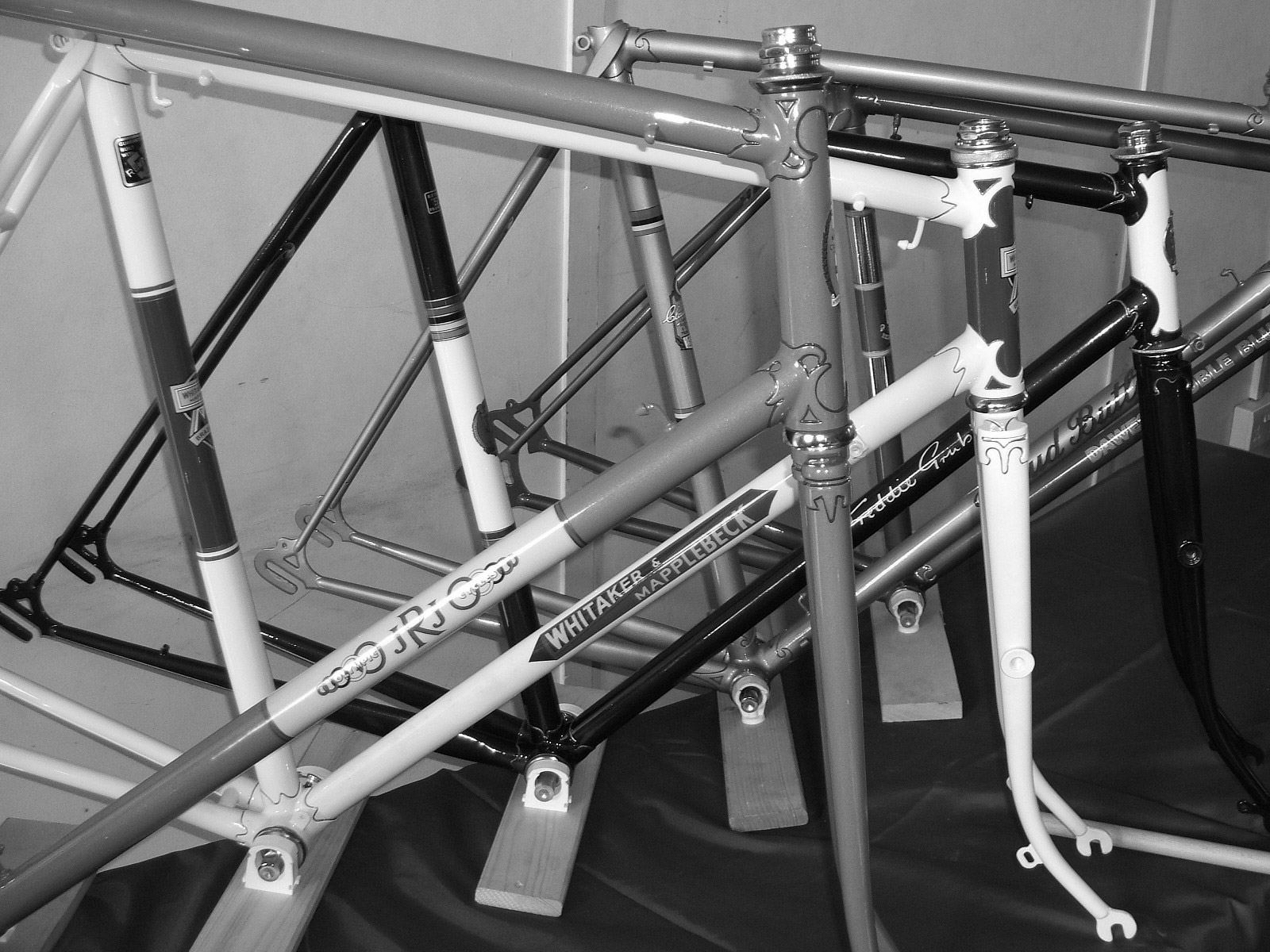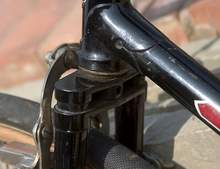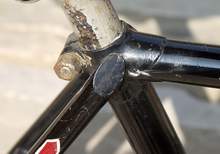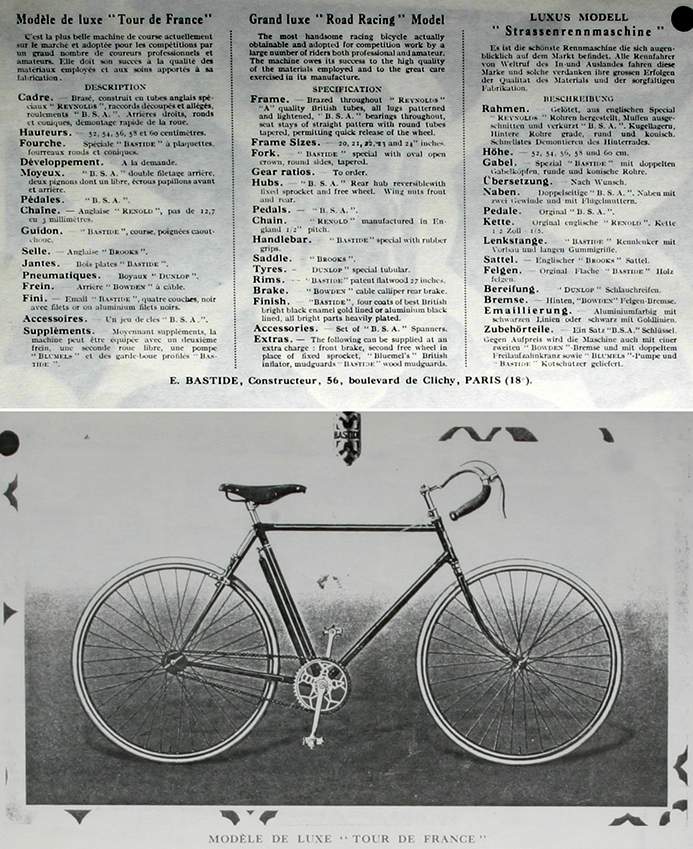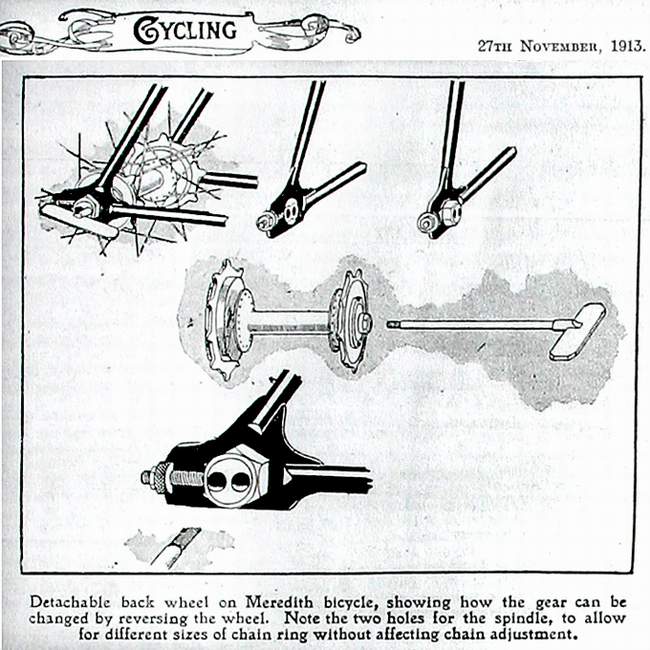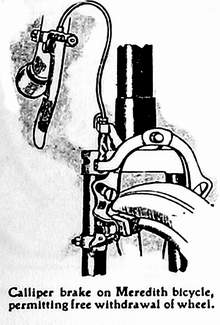Bastide
Posted: Tuesday 21st July 2020
The first reaction of most cyclists when presented with the Bastide is ‘What’s so special about this bike, it just looks like any other sports bike from the 20s or 30s’. However, it was the bike that changed the style for road bikes in England for ever more after the First World War. It embodied exactly the ‘Less is more’ approach advocated by the most influential writers such as Wayfarer in the cycling press of the time. Not only did it influence the style and construction of the racing bike but roadsters also changed too in design as a result of the widespread changes first shown on the Bastide.
Leon Meredith of the Constrictor Tyre Company was responsible for importing the first Bastides and displaying them at the 1913 Olympia Cycle show where they were the sensation of the show. Costing 13 guineas, they were nearly as expensive as the top of the range Dursley-Pedersens, Sunbeams and Lea-Francis yet unlike those bikes which were loaded with gears, brakes, headlocks, sprung saddles, racks, toolkit etc were fitted with a single brake and gear and no trimmings.
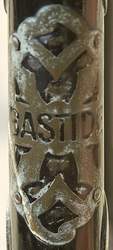
The Bastide frame was built from top quality English Reynolds tubing with lugs and fittings provided by BSA. Bastide, of whom not much is known was based at 56 Boulevard de Clichy, Paris and turned these fittings into a totally superb racer. Wheels were smaller (26in rather than 28in), the bottom bracket was just 25cm from the ground instead of 30cm giving the machine a sleek and low appearance. The top tube was parallel to the ground – most racers at this period had top tubes sloping down to the head and most importantly the rear seatstays and chainstays were brazed into position instead of bolted as was common practice then. Both the seat and chainstays were tapered round tubes with an indented right hand chainstay to allow for chainwheel clearance. This made for a much stiffer and more efficient rear end to the frame. And the frame was much smaller – it was ridden with three inches of seat pillar showing rather than with the saddle stuffed right down onto the top tube. A single front calliper brake was fitted which operated on the side of the wood rims and these early models featured BSA rear hubs with special hollow spindles and a skewer with quick thread that made for extremely quick and fast wheel replacement. Fork blades were round.
Some Bastide features
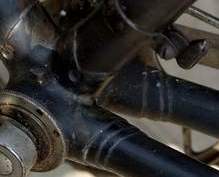
The First World War came and importation of Bastides ceased for two or three years. But as soon as the war ended they became available again. This time there were a number of new English framebuilders – Granby (who had probably started in 1913), Macleans, Saxon, Grubb and later Selbach and F W Evans who quickly latched onto the new look racer encouraged by a number of cycling writers who preached the ‘less is more’ philosophy of bike design continuously in the pages of Cycling and the CTC Gazette. It was not long before some of the more forward thinking bigger manufacturers latched onto the new design – New Hudson and James were probably the first in 1922. Some clung to their heavy old designs for a very long time among them BSA who still offered road racers to the old frame design as late as 1927. Most makers in France and Italy were independently building to a similar design but in some countries such as Holland and Germany bicycle design did not change from the old style for another 30 years and much later still in the Far East.
Bastide bicycles were shown by Constrictors as late as 1928 with the then new fangled Conloy aluminium fittings. The 1927 show featured a Bastide road racer weighing just 15lb (6.8kg). Leon Meredith, the boss of Constrictor died in 1930 and although the firm continued right up until the late 60s Bastide bikes were no longer imported. It is known that Bastide stopped making frames in 1936.
Frame
Built from Reynolds A grade tubing with BSA lugs. Many of these must have been specially made for Bastide – the tapered seatstays and chainstays were not a standard item from Reynolds. And the lugs were also not the standard fare that BSA offered.
Fittings
Back in this period all frames would be supplied with fittings by the framebuilder – in Bastide’s case they came from BSA – so a BSA bottom bracket, headclip type headset and BSA cranks and chainwheel were fitted.
Brake(s)
A novel feature at least to English eyes was the calliper brake operated by cable on the side of the rim. This offered quick wheel removal and fitting but lacked power when used on the wooden rims. The French would normally fit two brakes because they would often use freewheels in place of fixed rear cogs.
Wheels
All proper racing bikes during the Bastide period would have used wood rims, Maple wood was the choice on the top rims. BSA hubs sometimes relabelled by Bastide were generally fitted. At the beginning of the period these were mostly single sided offering just one fixed gear. By the early 20s most were double sided with a fixed gear on either side in England.
Posted: Tuesday 21st July 2020
This article appears in the following categories.
Upcoming Events
Whether you are looking for a gentle social meet up, or a 100-mile ride browse the community’s upcoming events and plan your next weekend outing.
